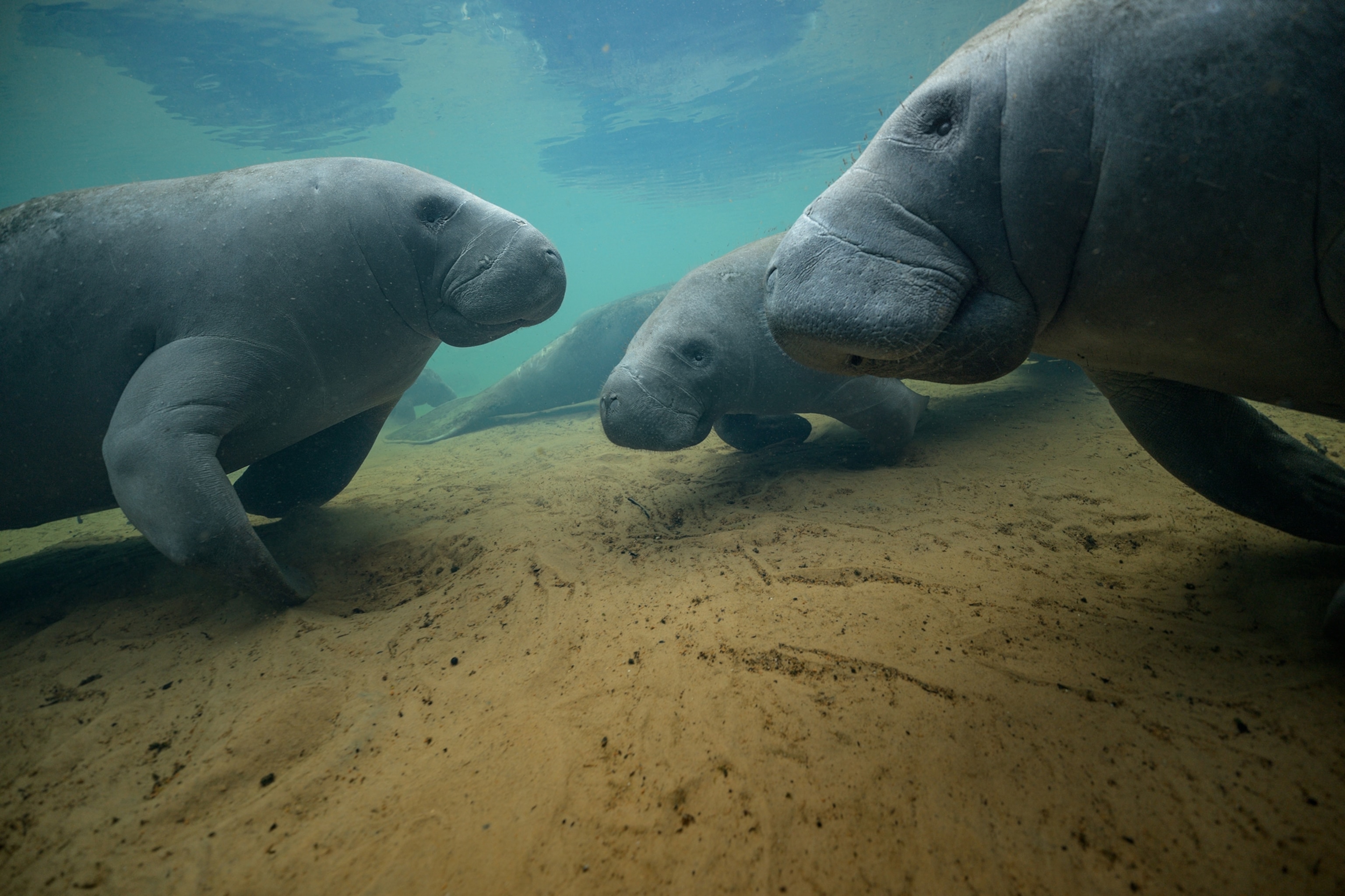
See our best wildlife photos from 2023
A tender moment between mountain hares. Chickens strutting their stuff on the catwalk. Orcas on the hunt. These are our 18 favorite animal pictures of the year.
A curious sea otter pup peeks out from behind a column of kelp while it forages for crabs or snails off California’s Monterey Bay. Each of these furry marine mammals might eat about 15 pounds of shellfish meat daily.
Yet in the early 1900s, this scene might be extremely rare, as the fur trade drove these aquatic predators to near-extinction. Fortunately, efforts such as reintroducing animals to the wild have helped the species rebound, though they’re still not out of the woods. The southern sea otter, a subspecies, is threatened in California, with only 3,000 animals remaining.
Ralph Pace’s photograph, published in the February issue of National Geographic, provides a close-up look at wildlife in their native habitat. It’s also one of 18 photos that National Geographic’s photo editors chose as our best wildlife photos of the year.
“The images chosen this year reflect the wide range of stories we covered—across species, ecosystems, geographies and photographic styles—that convey the wonder, surprise, humor and vulnerability of the creatures with whom we share the planet,” says visual lead for natural history and conservation storytelling Alexa Keefe.
She hopes these images inspire a love of the natural world. Some of the animals featured represent success stories, like the endangered African wild dogs, whose populations have stabilized in Mozambique's Niassa Special Reserve thanks to investment from locals. Others are imperiled—like mountain hares in the Scottish Highlands that have evolved to camouflage with snow, but they could face an uncertain future in an increasingly snowless world. Others simply encourage us to take a closer look at the creatures who inhabit our wondrous world—like the hidden beauty and charm of spiders or the amazing techniques orcas use to capture out-of-reach prey.
















You May Also Like
Go Further
Animals
- Fireflies are nature’s light show at this West Virginia state parkFireflies are nature’s light show at this West Virginia state park
- These are the weird reasons octopuses change shape and colorThese are the weird reasons octopuses change shape and color
- Why young scientists want you to care about 'scary' speciesWhy young scientists want you to care about 'scary' species
- What rising temperatures in the Gulf of Maine mean for wildlifeWhat rising temperatures in the Gulf of Maine mean for wildlife
- He’s called ‘omacha,’ a dolphin that transforms into a man. Why?He’s called ‘omacha,’ a dolphin that transforms into a man. Why?
Environment
- What rising temperatures in the Gulf of Maine mean for wildlifeWhat rising temperatures in the Gulf of Maine mean for wildlife
- He’s called ‘omacha,’ a dolphin that transforms into a man. Why?He’s called ‘omacha,’ a dolphin that transforms into a man. Why?
- The northernmost flower living at the top of the worldThe northernmost flower living at the top of the world
- This beautiful floating flower is wreaking havoc on NigeriaThis beautiful floating flower is wreaking havoc on Nigeria
- What the Aral Sea might teach us about life after disasterWhat the Aral Sea might teach us about life after disaster
History & Culture
- Scientists find evidence of ancient waterway beside Egypt’s pyramidsScientists find evidence of ancient waterway beside Egypt’s pyramids
- This thriving society vanished into thin air. What happened?This thriving society vanished into thin air. What happened?
Science
- Why pickleball is so good for your body and your mindWhy pickleball is so good for your body and your mind
- Extreme heat can be deadly – here’s how to know if you’re at riskExtreme heat can be deadly – here’s how to know if you’re at risk
- Why dopamine drives you to do hard things—even without a rewardWhy dopamine drives you to do hard things—even without a reward
- What will astronauts use to drive across the Moon?What will astronauts use to drive across the Moon?
- Oral contraceptives may help lower the risk of sports injuriesOral contraceptives may help lower the risk of sports injuries
- How stressed are you? Answer these 10 questions to find out.
- Science
How stressed are you? Answer these 10 questions to find out.
Travel
- A guide to Philadelphia, the US city stepping out of NYC's shadowA guide to Philadelphia, the US city stepping out of NYC's shadow
- How to make perfect pierogi, Poland's famous dumplingsHow to make perfect pierogi, Poland's famous dumplings
- The best long-distance Alpine hike you've never heard ofThe best long-distance Alpine hike you've never heard of
- Fireflies are nature’s light show at this West Virginia state parkFireflies are nature’s light show at this West Virginia state park
- How to explore the highlights of Italy's dazzling Lake ComoHow to explore the highlights of Italy's dazzling Lake Como
- Going on a cruise? Here’s how to stay healthy onboardGoing on a cruise? Here’s how to stay healthy onboard




